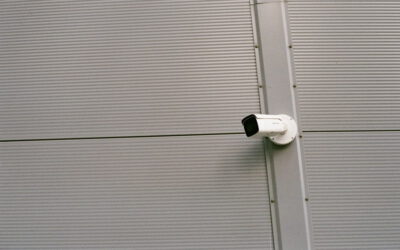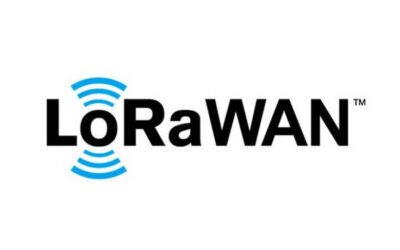How to Make a Real-Time Crops Sensor System
CONTENT:
- CROPS SENSOR SYSTEM: CORE FEATURES
- TECH STACK FOR DEVELOPING A REAL-TIME CROPS SENSOR SYSTEM
- TAKEAWAYS
- ABOUT EyeWeather Sensor
Agriculture in the modern age isn’t so primal and people-dependent. It began to change from the moment of the first automation of labor by mankind – the invention of tools. And it’s changing every day.
Nowadays people have a lot of preferences that progressively shifting toward organic and sustainably-produced products and products that require more attention, data, and labor. These fast-growing and changing demands needs must be met by the agricultural sector. At that time the agriculture sector has its own problems like labor shortages and rising costs for farm work. These factors lead to a farmers’ dilemma: How Can I Have More Harvest at Lower Cost? And here is The Main Solution – AUTOMATION!
This tension isn’t new in agriculture. For all of human history, increasing agricultural production has been a function of either adding more laborers or finding more efficient tools to do the job. And we want to introduce our solution – Real-Time Crops Sensor System.
With this System, you will forget about the pain of controlling the statement of farmers’ crops. Sensors help you to spend time and money in a more suitable way by measuring the main indicators of the soil like acidity, humidity, Ph.
So if you in future want to develop Real-Time Crops Sensor System you have to go through the next stages:
1. CROPS SENSOR SYSTEM: CORE FEATURES
For the realizations of the tasks, we have to think about the global conception of the System. Firstly, we decided to use a sensor array that can be deployed in any geometry, depending on the need for use. It will be handy for the easy start of using this in real-life surroundings.
On the next step, we must care about one of the most important features that were described at the top of the article. This feature is the automation of our brand-new system. Our engineers advise – use more ecological types of electricity. The system can work for a long time absolutely autonomously. This is achieved through the installed solar cells and battery.
After that, we may think about real-time data collection and data storage. Before you can automate farm operations, however, you need accurate data about the state of the farm. You also need a way for autonomous devices to connect with one another. As for us, the best way is the Sensor Array since it is this option that allows you to get the most efficient information.
For the end of the paragraph, we left an interesting feature that helps to use and control all sensors by a human. The user can specify any required number of sensors, and then connect them to the same network.
2. TECH STACK FOR DEVELOPING A REAL-TIME CROPS SENSOR SYSTEM
This task requires not just knowledge about IoT. It may contain complex knowledge about the agriculture sphere and term that we will use. It’s because you have a hard feeling of responsiveness for the future crops of farmers and if the System will not work right – a lot of people will have trouble. Farmers will have losses and lost crops. Food producers will be left without raw materials which will adversely affect the economy. The prizes will rise to the sky. We all don’t want these consequences, don’t we? So you may study the agriculture field thoroughly or consult with specialists in this sector.
For the accomplishment of this task we used:
● LoRa
● GPS
● Solar Panel
● Capacitive of sensor
● Moisture
● Sensor
● Onboard decision making
● DSP (Digital Signal Processor)
● Ultra-Low Power
3. TAKEAWAYS
It’s not hard to see the value of small, connected devices throughout the farm for increasing efficiency and safety. It’s no wonder growers have taken to IoT so strongly. According to Business Insider, IoT device installations in agricultural settings are expected to increase at a 20% annual compound rate over the next few years. With more accurate and timely data, growers can spend less time out in the field assessing and diagnosing conditions, and more time working on solutions.
4. ABOUT EyeWeather Sensor
EyeWeather – is the crops sensor that will make farmers work easier by getting them fresh real-time data about the state of soil to timely warn about unsuitable conditions of the soil for crop growing.
Sensors installed throughout the field to alert growers when soil conditions are outside the ordinary. A farmer might receive a notification that there are lower moisture levels in a certain part of the field. Given that information in real-time, the farmer has an opportunity to correct the issue (in irrigation systems), to produce higher-quality and larger yields. Similar IoT sensor technology has applications in storage safety as well.
It’s not hard to see the value of small connected devices throughout the farm for increasing efficiency and safety. It’s no wonder growers taking to IoT so strongly.
ADUK provides hardware product engineering services and other, contact us to know more.
Recent Posts
- What Is an Exoskeleton Suit?
- Where can you use an ultrasonic motor?
- Smart Camera: System That You Can Use for a Wide Variety of Purposes
- Why Is the Smart Toothbrush Better Than a Regular One?
- Microcontrollers: An Integral Part of Embedded Hardware
- Air Quality Monitoring System: Why It’s So Important in Modern Realities





